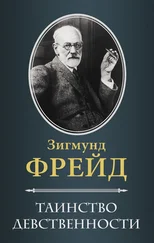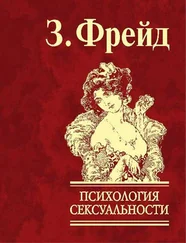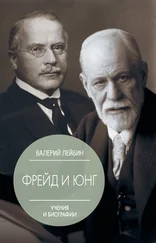Зигмунд Фрейд - Totem and Taboo
Здесь есть возможность читать онлайн «Зигмунд Фрейд - Totem and Taboo» весь текст электронной книги совершенно бесплатно (целиком полную версию без сокращений). В некоторых случаях можно слушать аудио, скачать через торрент в формате fb2 и присутствует краткое содержание. Год выпуска: 2014, Издательство: epubBooks Classics, Жанр: Психология, на английском языке. Описание произведения, (предисловие) а так же отзывы посетителей доступны на портале библиотеки ЛибКат.
- Название:Totem and Taboo
- Автор:
- Издательство:epubBooks Classics
- Жанр:
- Год:2014
- ISBN:нет данных
- Рейтинг книги:3 / 5. Голосов: 1
-
Избранное:Добавить в избранное
- Отзывы:
-
Ваша оценка:
- 60
- 1
- 2
- 3
- 4
- 5
Totem and Taboo: краткое содержание, описание и аннотация
Предлагаем к чтению аннотацию, описание, краткое содержание или предисловие (зависит от того, что написал сам автор книги «Totem and Taboo»). Если вы не нашли необходимую информацию о книге — напишите в комментариях, мы постараемся отыскать её.
Totem and Taboo — читать онлайн бесплатно полную книгу (весь текст) целиком
Ниже представлен текст книги, разбитый по страницам. Система сохранения места последней прочитанной страницы, позволяет с удобством читать онлайн бесплатно книгу «Totem and Taboo», без необходимости каждый раз заново искать на чём Вы остановились. Поставьте закладку, и сможете в любой момент перейти на страницу, на которой закончили чтение.
Интервал:
Закладка:
Andrew Lang holds that it does not make any difference how clans acquired their animal names. It might be assumed that one day they awoke to the consciousness that they had them without being able to account from where they came. The origin of these names had been forgotten. In that case they would seek to acquire more information by pondering over their names, and with their conviction of the importance of names they necessarily came to all the ideas that are contained in the totemic system. For primitive men, as for savages of to–day and even for our children [156] See the chapter on Taboo, p. 96.
, a name is not indifferent and conventional as it seems to us, but is something important and essential. A man’s name is one of the main constituents of his person and perhaps a part of his psyche. The fact that they had the same names as animals must have led primitive men to assume a secret and important bond between their persons and the particular animal species. What other bond than consanguinity could it be? But if the similarity of names once led to this assumption it could also account directly for all the totemic prohibitions of the blood taboo, including exogamy.
“No more than these three things—a group animal name of unknown origin; belief in a transcendental connexion between all bearers, human and bestial, of the same name; and belief in the blood superstitions—were needed to give rise to all the totemic creeds and practices, including exogamy” ( Secret of the Totem , p. 126).
Lang’s explanation extends over two periods. It derives the totemic system of psychological necessity from the totem names, on the assumption that the origin of the naming has been forgotten. The other part of the theory now seeks to clear up the origin of these names. We shall see that it bears an entirely different stamp.
This other part of the Lang theory is not markedly different from those which I have called ‘nominalistic’. The practical need of differentiation compelled the individual tribes to assume names and therefore they tolerated the names which every tribe ascribed to the other. This ‘naming from without’ is the peculiarity of Lang’s construction. The fact that the names which thus originated were borrowed from animals is not further remarkable and need not have been felt by primitive men as abuse or derision. Besides, Lang has cited numerous cases from later epochs of history in which names given from without that were first meant to be derisive were accepted by those nicknamed and voluntarily borne (The Guises, Whigs and Tories). The assumption that the origin of these names was forgotten in the course of time connects this second part of the Lang theory with the first one just mentioned.
([Greek: β b]) The Sociological Theories
S. Reinach, who successfully traced the relics of the totemic system in the cult and customs of later periods, though attaching from the very beginning only slight value to the factor of descent from the totem animal, once made the casual remark that totemism seemed to him to be nothing but “ une hypertrophie de l’instinct social .” [157] l.c. , Vol. I, p. 41.
The same interpretation seems to permeate the new work of E. Durkheim, Les Formes Élémentaires de la Vie Religieuse; Le Systême Totémique en Australie , 1912. The totem is the visible representative of the social religion of these races. It embodies the community, which is the real object of veneration.
Other authors have sought a more intimate reason for the share which social impulses have played in the formation of totemic institutions. Thus A. C. Haddon has assumed that every primitive tribe originally lived on a particular plant or animal species and perhaps also traded with this food and exchanged it with other tribes. It then was inevitable that a tribe should become known to other tribes by the name of the animal which played such weighty rôle with it. At the same time this tribe would develop a special familiarity with this animal, and a kind of interest for it which, however, was based upon the psychic motive of man’s most elementary and pressing need, namely, hunger [158] Address to the Anthropological Section, British Association , Belfast, 1902. According to Frazer, l.c. , Vol. IV, p. 50.
.
The objections against this most rational of all the totem theories are that such a state of the food supply is never found among primitive men and probably never existed. Savages are the more omnivorous the lower they stand in the social scale. Besides, it is incomprehensible how such an exclusive diet could have developed an almost religious relation to the totem, culminating in an absolute abstention from the referred food.
The first of the three theories about the origin of totemism which Frazer stated was a psychological one. We shall report it elsewhere.
Frazer’s second theory, which we will discuss here, originated under the influence of an important publication by two investigators of the inhabitants of Central Australia [159] The Native Tribes of Central Australia , by Baldwin Spencer and H. J. Gillen, London, 1891.
.
Spencer and Gillen describe a series of peculiar institutions, customs, and opinions of a group of tribes, the so–called Arunta nation, and Frazer subscribes to their opinion that these peculiarities are to be looked upon as characteristics of a primary state and that they can explain the first and real meaning of totemism.
In the Arunta tribe itself (a part of the Arunta nation) these peculiarities are as follows:
1. They have the division into totem clans but the totem is not hereditary but is individually determined (as will be shown later).
2. The totem clans are not exogamous, and the marriage restrictions are brought about by a highly developed division into marriage classes which have nothing to do with the totems.
3. The function of the totem clan consists of carrying out a ceremony which in a subtle magic manner brings about an increase of the edible totem. (This ceremony is called Intichiuma .)
4. The Aruntas have a peculiar theory about conception and re–birth. They assume that the spirits of the dead who belonged to their totem wait for their re–birth in definite localities and penetrate into the bodies of the women who pass such a spot. When a child is born the mother states at which spirit abode she thinks she conceived her child. This determines the totem of the child. It is further assumed that the spirits (of the dead as well as of the re–born) are bound to peculiar stone amulets, called Churinga , which are found in these places.
Two factors seem to have induced Frazer to believe that the oldest form of totemism had been found in the institution of the Aruntas. In the first place the existence of certain myths which assert that the ancestors of the Aruntas always lived on their totem animal, and that they married no other women except those of their own totem. Secondly, the apparent disregard of the sexual act in their theory of conception. People who have not yet realized that conception was the result of the sexual act might well be considered the most backward and primitive people living to–day.
Frazer, in having recourse to the Intichiuma ceremony to explain totemism, suddenly saw the totemic system in a totally different light as a thoroughly practical organization for accomplishing the most natural needs of man. (Compare Haddon above [160] There is nothing vague or mystical about it, nothing of that metaphysical haze which some writers love to conjure up over the humblest beginnings of human speculation but which is utterly foreign to the simple, sensuous, and concrete modes of the savage. ( Totemism and Exogamy , I., p. 117.)
.) The system was simply an extraordinary piece of ‘co–operative magic’. Primitive men formed what might be called a magic production and consumption club. Each totem clan undertook to see to the cleanliness of a certain article of food. If it were a question of inedible totems like harmful animals, rain, wind, or similar objects, it was the duty of the totem clan to dominate this part of nature and to ward off its injuriousness. The efforts of each clan were for the good of all the others. As the clan could not eat its totem or could eat only a very little of it, it furnished this valuable product for the rest and was in turn furnished with what these had to take care of as their social totem duty. In the light of this interpretation furnished by the Intichiuma ceremony, it appeared to Frazer as if the prohibition against eating the totem had misled observers to neglect the more important side of the relation, namely the commandment to supply as much as possible of the edible totem for the needs of others.
Интервал:
Закладка:
Похожие книги на «Totem and Taboo»
Представляем Вашему вниманию похожие книги на «Totem and Taboo» списком для выбора. Мы отобрали схожую по названию и смыслу литературу в надежде предоставить читателям больше вариантов отыскать новые, интересные, ещё непрочитанные произведения.
Обсуждение, отзывы о книге «Totem and Taboo» и просто собственные мнения читателей. Оставьте ваши комментарии, напишите, что Вы думаете о произведении, его смысле или главных героях. Укажите что конкретно понравилось, а что нет, и почему Вы так считаете.






